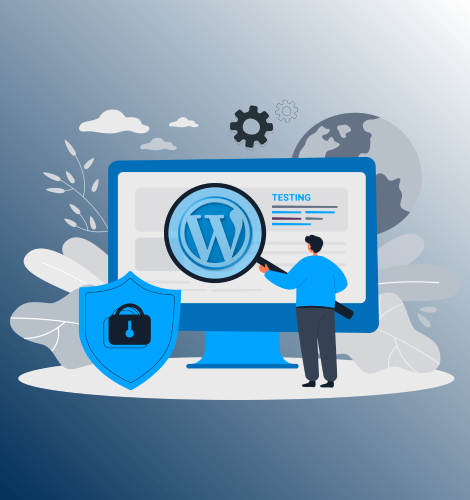Table of Contents

Improvement in WordPress website security is crucial to protect both your data and users. Following are some best practices for enhancing WordPress website security:
1. Keep WordPress, Themes, and Plugins Updated
Regularly update WordPress core, themes, and plugins for patching vulnerabilities. Remove unused plugins and themes to minimize potential attack vectors.
2. Strong Passwords and Two-Factor Authentication
Ensure that all user accounts have strong, unique passwords. Enable two-factor authentication (2FA) for an additional layer of protection.
3. Limit Login Attempts
Use plugins like Limit Login Attempts Reloaded to prevent brute-force attacks by limiting the number of failed login attempts.
4. Install a Security Plugin
Security plugins like Wordfence, Sucuri, or iThemes Security offer features such as malware scanning, firewall protection, and monitoring.
5. Use a Secure Hosting Provider
Choose a hosting provider that offers advanced security features, such as daily backups, malware scanning, and server-side firewalls.
6. Enable HTTPS
Install an SSL certificate to encrypt data between the server and visitors. Most hosting providers offer free SSL certificates.
7. Change Default Login URL
Change the default /wp-admin or /wp-login.php URL using plugins like WPS Hide Login so attackers will have a hard time finding your login page.
8. Set File and Directory Permissions
Set correct file permissions: Files: 644, Directories: 755. Avoid 777 permissions for any file or directory.
9. Disable XML-RPC
Except when needed, disable XML-RPC to prevent potential brute-force attacks and DDoS vulnerabilities.
10. Do Regular Backups
Take scheduled backups through backup plugins such as UpdraftPlus or BackupBuddy. Keep them offsite for disaster recovery.
11. Web Application Firewall
The WAF can filter out and block malicious traffic. This is possible with Cloudflare and Sucuri Firewall.
12. User Activity
Plugins such as Simple History can be used to monitor user activities for suspicious actions.
13. Disable Directory Indexing and Browsing
To avoid directory listing, add the following line in the .htaccess file: Options -Indexes
14. Use Strong Database Prefixes
Avoid using the default wp_ prefix for database tables to reduce SQL injection risks. Use plugins like WP-DBManager to change it.
15. Disable Theme and Plugin Editor
Add the following line to your wp-config.php file to disable the editor: php Copy code define(‘DISALLOW_FILE_EDIT’, true);


